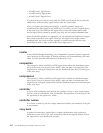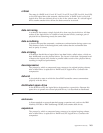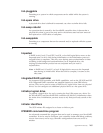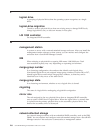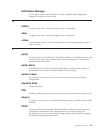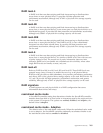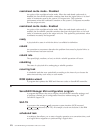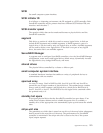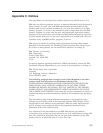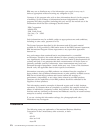RAID level-5
A RAID level that uses data striping and block interweaving to distribute data
across three or more physical drives. It provides full data protection and
performance acceleration, although only 67-94% of physical drive storage capacity
can be used.
RAID level-5E
A RAID level that uses data striping and block interweaving to distribute data
across four or more physical drives; it uses some space on each physical drive as a
distributed hot-spare. It provides full data protection and performance acceleration,
although only 50-88% of physical drive storage capacity can be used.
RAID level-5EE
A RAID level that uses data striping and block interweaving to distribute data
across four or more physical drives. Like RAID level-5E, it uses a distributed
hot-spare but offers faster rebuild times. It provides full data protection and
performance acceleration, although only 50-88% of physical drive storage capacity
can be used.
RAID level-6
A RAID level that uses data striping and block interweaving to distribute data
across four or more physical drives. It is similar to RAID level-5 but with two sets
of parity instead of one. The second set of parity information improves fault
tolerance. RAID level-6 can handle two simultaneous drive failures, where other
single RAID levels can handle, at most, only one.
RAID level-x0
Refers to RAID level-00, level-10, level-1E0, and level-50. These RAID levels use
spanned arrays (array of arrays) to enable the use of up to 60 physical drives.
RAID level-00 provides no data redundancy, but provides performance acceleration
and allows 100% of the physical drive storage capacity to be used. RAID levels -10,
-1E, and -50 provide full data protection, performance acceleration, and greater
reliability, although only 67-94% of physical drive storage capacity can be used.
RAID signature
A small segment on each physical disk in a RAID configuration that stores
information about drives and arrays.
read-ahead cache mode
A ServeRAID controller setting that determines whether the ServeRAID controller
transfers data from disk to its local cache in increments equal to the stripe-unit size
or the system I/O requests. The options are enabled, disabled, and adaptive; the
default value is adaptive.
read-ahead cache mode - Adaptive
The default value of the read-ahead cache mode. When the read-ahead cache mode
is set to adaptive, the ServeRAID controller continually reevaluates whether to set
the read-ahead cache mode to enabled or disabled.
Appendix B. Glossary 269




